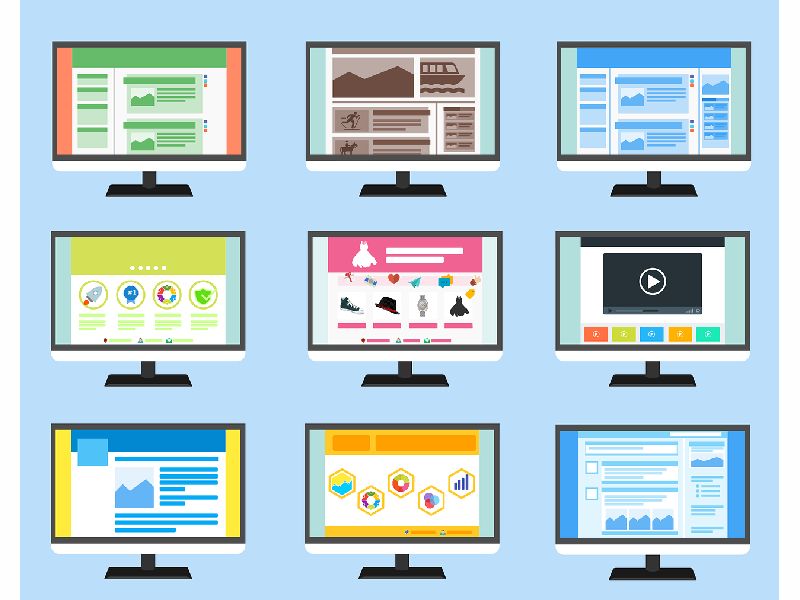Introduction
In today’s rapidly evolving digital landscape, the intersection of technology and humanity has never been more profound. As we navigate the post-digital era, the principles of human-centric design stand as guiding beacons, illuminating the path towards creating technology that is not only innovative but also deeply empathetic to human needs and experiences.
Human-centric design, at its core, revolves around placing the user at the forefront of the design process. It entails understanding the nuances of human behavior, desires, and challenges, and leveraging this insight to craft technology solutions that resonate on a deeply personal level. This approach marks a departure from the traditional focus solely on functionality and efficiency, instead prioritizing empathy, inclusivity, and user experience.
In this article, we embark on a journey to explore the evolving role of human-centric design in shaping the future of technology. We will delve into the principles that underpin this approach, examine real-life examples of its implementation, and contemplate the implications for our increasingly digitized society.
Join me as we unravel the intricate tapestry of human-centric design and discover its transformative potential in the post-digital era.
Evolution of Technology and Design
The evolution of technology and design has been marked by a fascinating trajectory, one that reflects society’s shifting values, aspirations, and priorities. In the early days of computing, functionality and efficiency reigned supreme, with designers primarily focused on optimizing systems and processes. However, as technology became more pervasive and integrated into every aspect of our lives, a paradigm shift occurred.
Enter human-centric design—a philosophy rooted in the belief that technology should serve humanity, rather than the other way around. This shift in mindset was catalyzed by the recognition that technology, no matter how advanced, is ultimately a tool for enhancing human experiences and improving quality of life.
In recent years, we’ve witnessed a growing emphasis on empathy, user experience, and inclusivity in the design community. Designers are now encouraged to step into the shoes of their users, to understand their needs, desires, and pain points on a deeper level. This shift has given rise to a new breed of products and services that are not only functional but also deeply intuitive and user-friendly.
Moreover, the democratization of technology has empowered individuals from diverse backgrounds to participate in the design process. With the proliferation of design tools and resources, anyone with a passion for creativity and problem-solving can contribute to the creation of innovative solutions that address real-world challenges.
As we continue to chart the course of technological innovation, it is clear that human-centric design will play a central role in shaping the future of technology. By putting human needs and experiences at the forefront of the design process, we have the opportunity to create a more inclusive, empathetic, and ultimately, more humane digital world.
Understanding Human Needs
Central to the ethos of human-centric design is the profound understanding of human needs. It goes beyond mere functionality and delves into the realm of emotions, aspirations, and aspirations. To truly create technology that resonates with users, designers must cultivate empathy and immerse themselves in the intricacies of human behavior.
One essential aspect of understanding human needs is recognizing the diversity of experiences and perspectives. Each individual brings a unique set of values, beliefs, and challenges to the table. By embracing this diversity, designers can create solutions that cater to a broad range of users, ensuring inclusivity and accessibility for all.
To illustrate this point, let’s consider the story of Sarah, a young entrepreneur with a vision impairment. Sarah is passionate about using technology to empower individuals with disabilities, but she often encounters barriers when accessing digital tools and services. Frustrated by the lack of accessible options, Sarah decides to take matters into her own hands.
With the help of a team of designers and developers, Sarah embarks on a mission to create an app that addresses the specific needs of individuals with visual impairments. They conduct extensive research, engaging with users from diverse backgrounds to gather insights and feedback. The result is a groundbreaking app that features intuitive navigation, customizable settings, and robust accessibility features.
Sarah’s app not only transforms the lives of individuals with disabilities but also serves as a testament to the power of human-centric design. By listening to the needs of marginalized communities and prioritizing inclusivity, Sarah and her team have created a solution that benefits society as a whole.
This real-life example underscores the importance of understanding human needs in the design process. By empathizing with users and embracing diversity, designers can create technology that truly makes a difference in people’s lives.
Designing for Diversity and Inclusion
In the realm of human-centric design, diversity and inclusion are not just buzzwords—they are foundational principles that drive innovation and foster a sense of belonging for all users. Designing for diversity means recognizing and embracing the full spectrum of human experiences, regardless of race, gender, age, ability, or background.
When creating technology solutions, it is essential to consider the diverse needs and perspectives of users from all walks of life. This requires designers to challenge their own biases and assumptions, and actively seek out input from underrepresented groups. By doing so, we can create products and services that are accessible, inclusive, and empowering for everyone.
One exemplary case study of designing for diversity and inclusion is the development of the Be My Eyes app. Be My Eyes is a mobile app that connects blind and visually impaired users with sighted volunteers through live video calls. The app allows blind users to receive assistance with a wide range of tasks, from reading labels to navigating unfamiliar environments.
The success of Be My Eyes lies in its commitment to inclusivity from the outset. The app was developed in collaboration with blind and visually impaired individuals, who provided invaluable insights into their daily challenges and needs. As a result, Be My Eyes features intuitive design, clear navigation, and inclusive features that cater to users of all abilities.
By prioritizing diversity and inclusion in the design process, Be My Eyes has created a truly transformative solution that empowers individuals with disabilities to live more independently and confidently. The app serves as a shining example of how technology can break down barriers and create opportunities for all.
As designers, it is our responsibility to champion diversity and inclusion in every aspect of our work. By embracing the rich tapestry of human experiences, we can create technology that reflects the true diversity of our world and makes a positive impact on society.
The Role of Empathy in Design
At the heart of human-centric design lies the principle of empathy—the ability to understand and share the feelings of another. Empathy is not merely a soft skill; it is a fundamental tool for creating technology that truly connects with users on a deep emotional level.
Empathetic design begins with listening—listening to the stories, struggles, and aspirations of users from all walks of life. By immersing ourselves in their experiences, we gain valuable insights that inform every aspect of the design process. This empathy-driven approach allows us to anticipate user needs, address pain points, and create solutions that resonate on a personal level.
To illustrate the power of empathy in design, let’s consider the story of Alex, a retired veteran struggling with post-traumatic stress disorder (PTSD). Alex finds it challenging to manage his symptoms and navigate everyday life, especially when it comes to accessing mental health resources.
In response to Alex’s plight, a team of designers embarks on a mission to create a mobile app specifically tailored to the needs of individuals with PTSD. They conduct in-depth interviews with Alex and other veterans, gaining a deep understanding of their unique challenges and preferences. Armed with this empathy-driven insight, they design an app that offers personalized coping strategies, access to support groups, and tools for tracking symptoms.
The result is a transformative solution that not only helps Alex manage his PTSD but also empowers him to take control of his mental health journey. By approaching the design process with empathy and compassion, the team has created a product that makes a meaningful difference in the lives of users like Alex.
This real-life example underscores the vital role of empathy in design. By listening deeply and empathizing with users, designers can create technology that not only meets functional needs but also addresses deeper emotional and psychological needs. Empathy is the bridge that connects technology with humanity, and it is essential to the success of human-centric design.
Embracing Continuous Feedback and Iteration
In the dynamic landscape of human-centric design, embracing continuous feedback and iteration is paramount. Unlike traditional design approaches that follow a linear path from concept to launch, human-centric design is an iterative process that thrives on constant refinement and improvement based on user feedback.
At every stage of the design journey, from ideation to implementation, designers must actively seek out feedback from users and stakeholders. This feedback serves as a compass, guiding the design process and ensuring that solutions remain aligned with user needs and expectations. By incorporating feedback early and often, designers can identify potential pain points, uncover hidden opportunities, and refine their designs to better serve the end user.
One powerful example of the value of continuous feedback and iteration is the development of the Google Maps app. When Google first launched Maps, it revolutionized the way people navigate and explore the world. However, the initial version of the app was far from perfect, with users encountering various usability issues and inaccuracies.
Rather than resting on their laurels, the team behind Google Maps embraced a culture of continuous improvement. They actively solicited feedback from users through surveys, reviews, and user testing sessions, and used this feedback to drive ongoing iterations and updates to the app. Over time, Google Maps evolved into a seamless and intuitive navigation tool, thanks to its commitment to listening to user feedback and iterating based on their needs.
This iterative approach not only improves the user experience but also fosters a culture of innovation and adaptation within the design team. By treating design as a collaborative and iterative process, designers can create solutions that are truly responsive to the evolving needs of users and the ever-changing digital landscape
Conclusion
In conclusion, human-centric design represents a paradigm shift in the way we approach technology, placing the needs and experiences of users at the forefront of the design process. By prioritizing empathy, inclusivity, and continuous iteration, human-centric design empowers users to interact with technology in meaningful and transformative ways.
As designers, we have a profound responsibility to create technology that not only meets functional needs but also enhances the lives of users on a deeper level. By listening to their stories, understanding their perspectives, and embracing diversity and inclusion, we can design solutions that are truly impactful and inclusive.
In the fast-paced and ever-evolving world of technology, the principles of human-centric design serve as a guiding light, illuminating the path toward a future where technology enriches and empowers every facet of human existence. By embracing these principles and championing the human experience, we can create a more inclusive, equitable, and compassionate digital world for all.











